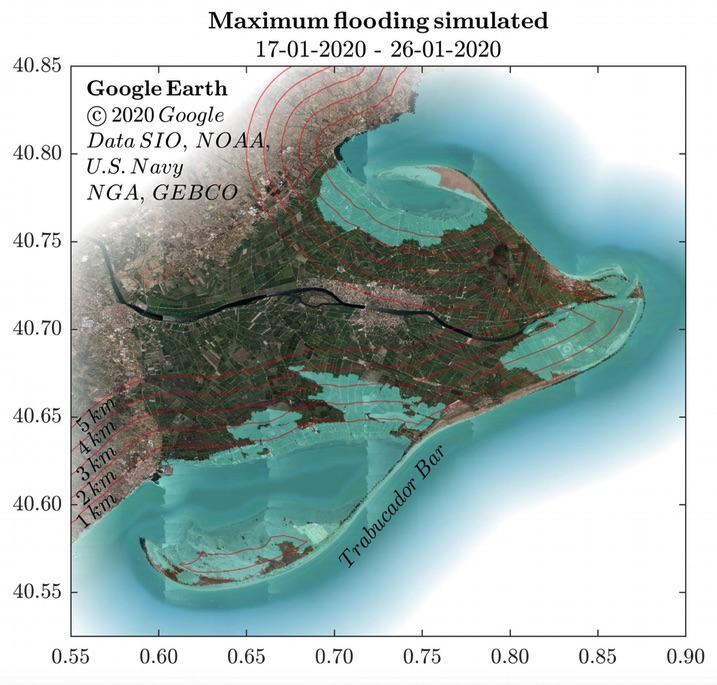Picture (above): Crashing waves. Credit: Renata Dos (Pixabay)
Storm Gloria, an intense low-pressure system battered the Iberian Peninsula for three days, from January 20-23, breaking numerous meteorological records. These included the highest precipitation in 24-hours for the Peninsula and at 8.4m the greatest recorded significant wave height for the entire Mediterranean Sea. Significant wave height is an average measure, the largest wave recorded during the storm actually peaked at 14.2m.
The slow-moving system produced strong easterly winds over a prolonged period, generating wind-waves that pounded the coastline across the entire basin leading to flooding, the destruction of coastal infrastructure, and significant erosion. In total, the storm damage costs exceeded $200m and 13 people died.

New research by CLEX researchers and colleagues from the University of the Balearic Islands focuses on the marine effects of Storm Gloria. The study paid special attention to the shorelines of the eastern Spanish coasts and the Balearic Islands, where major impacts were reported. The study aimed to examine the different components of Storm Gloria to determine which was most responsible for coastal damage.
To do this the researchers simulated the storm surges using a coupled hydrodynamic and wave propagation models. They reproduced the wind-waves generated over the Western Mediterranean Sea by mimicking the real time atmospheric pressure and surface winds of Storm Gloria and combined this with hydrodynamic and wave propagation models. These simulations allowed them to quantify the role each forcing contributed to generating the storm surge including characteristics like atmospheric pressure, the wind and the wave setup.
The results showed:
- Winds contributed the most to the storm surge – around 70% along the entire coastline – with wind forcing, registering maximum values near 40 cm around the areas most affected (Denia and Ebro Delta).
- The effect of the atmospheric pressure was generally negligible, particularly where the storm surge was largest, adding only 10 cm to the surge at most.
- Finally, the wave setup itself accounted for up to 40-50% of the storm surge in some areas.
Storm Gloria produced remarkably diverse impacts along the coasts of the Western Mediterranean. The flooding of low-lying areas was mostly concentrated in the Ebro Delta, with destruction of coastal infrastructure and intense beach erosion due to the impact of waves. Intriguingly, the frequency, not just the intensity of the waves, was shown to have an important effect on the eroded sediment in Mediterranean beaches during these type of events.
This new insight into what led to storm damage will enable planners and policymakers to take into account the damaging components of storm surges to develop new infrastructure that can withstand these storms in the future.
- Paper: Amores, A., Marcos, M., Carrió, D. S., and Gómez-Pujol, L.: Coastal Impacts of Storm Gloria (January 2020) over the Northwestern Mediterranean, Nat. Hazards Earth Syst. Sci. Discuss., https://doi.org/10.5194/nhess-2020-75, in review, 2020.
